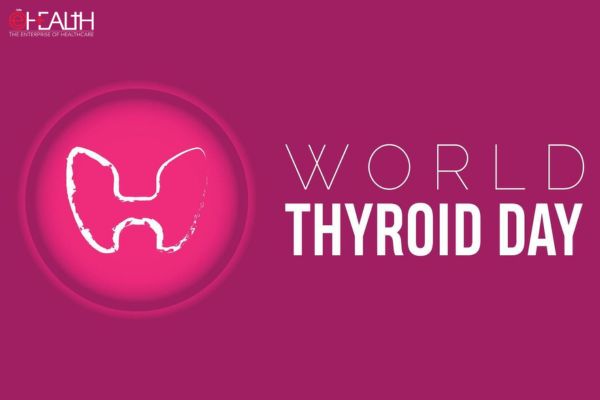
Healthcare continues to struggle with medical malpractice, putting patients’ lives and well-being at risk. This issue affects the reputation, financial position, and ability of healthcare providers to retain staff.
Exploring the underlying causes of medical malpractice is crucial for developing effective prevention strategies. According to a WHO report, communication failures contribute to 60-70% of global adverse events in healthcare settings, a situation comparable in India. A recent McKinsey survey found that over 60% of patients don’t receive enough information from health systems to help them find high-quality care. These communication breakdowns often occur during patient handoffs, information exchanges, and due to language barriers. Communication problems between professionals can lead to incorrect diagnoses and treatment plans. Additionally, inadequate staffing or staff overloaded with work can result in fatigue and errors in judgment. Currently, the population is growing at an annual rate of 0.92 percent (13 million), projected to reach 1.52 billion by 2032. If we suppose an additional 500 practicing doctors are added per year, resulting in five to ten new medical colleges annually, this would add a total of 600,000 practicing doctors by the end of 2032. Considering a further reduction of about 20% from the current stock of approximately 675,000 doctors, the total number of doctors would be around 1,160,000 in 2032. This ratio per thousand population is still within acceptable limits to health experts but is insufficient due to an aging population that consumes more medicines and healthcare services.

Preventive solutions can help reduce the risks associated with malpractices in the healthcare industry. According to the National Library of Medicine, the yearly number of medical negligence cases in India is around 5.2 million. Robust communication channels both internally and externally help in information sharing, reducing the chances of misinterpretations. Staff should always be educated about new trends in medicine so they remain updated. For example, projects like the one by NITI Aayog are piloting blockchain applications for ensuring the reliability of pharmaceutical supply chains and patient records.

There are enormous costs related to malpractice claims from patients. Draining vital resources, large settlements, and rising litigation costs could otherwise be funneled toward patient care and advances in medical technology. One high-profile case can reduce a smaller healthcare facility to a skeleton. For instance, a renowned hospital in Bangalore was involved in a high-profile medical malpractice litigation where a patient, Mr. Rajesh Kumar, 62, died allegedly due to a wrong diagnosis and delayed treatment for his heart condition. The court ruled in favor of the patient’s family, awarding them INR 1.5 crore as compensation. This financial burden strained the hospital’s resources, causing staff cuts, postponed equipment upgrades, and a shift to defensive medicine practices, which increased healthcare costs and unnecessary patient suffering. The hospital’s reputation was damaged, leading to a decrease in patient trust and admissions. Moreover, medical practice becomes defensive as practitioners fear litigation. Physicians may order superfluous tests and procedures not to focus on the best treatment for patients but to minimize legal risks, raising healthcare costs and causing unnecessary patient suffering.

From a B2B perspective, technology is crucial in mitigating malpractices. Advanced data analytics can identify underlying problems before they escalate to claims. Electronic health record (EHR) systems enable smooth communication among healthcare providers, enhancing continuity of care with minimal interruptions. Telemedicine platforms ensure immediate consultations and access to specialists, preventing complications. However, telemedicine increases the risk of medical negligence due to the lack of face-to-face consultation. On March 25, 2020, telemedicine was legalized for remote Indian locations with practice guidelines. The market for telemedicine is projected to grow at a CAGR of 21.2% between 2022 and 2030. It is now possible for registered medical practitioners, including MBBS doctors and experts in different fields, to conduct virtual consultations and provide prescriptions.

However, merely implementing these solutions is not enough. Creating a culture of safety for patients is equally important. This entails developing open communication between patients and healthcare providers, allowing patients to participate actively in care decisions.
These causes can be mitigated if healthcare institutions adopt a multi-faceted approach to curbing medical malpractice. High-quality care can be achieved through the adoption of updated technological systems and proactive risk management, leading to improved patient outcomes and safeguarding financial stability. For instance, in 2009, Apollo Hospitals, a healthcare provider in India, exemplified the synergy between advanced technological systems and proactive risk management. By implementing Electronic Health Records (EHR) and Health Information Exchange (HIE), they facilitated seamless data sharing, leading to more accurate diagnoses and personalized treatments. By 2014, 76% of hospitals had adopted basic EHR systems, and 97% of acute care hospitals had adopted certified EHR systems.
The healthcare industry is still grappling with the pervasive issue of medical malpractice. The loss of human life due to these incidents cannot be quantified, and the financial implications for organizations are significant. According to specialists, doctors and hospital staff might reduce medical negligence cases by almost 50% if they undergo short courses on dealing with severely sick or injured persons. Nearly 5,000,000 Indians die due to medical negligence annually. Institutions will have fewer malpractice cases if they implement risk mitigation strategies and policies aimed at enhancing patient safety, cooperation among employees, and fostering trustworthiness. This will promote healthier patients and financial stability for hospitals, enabling them to deliver high-quality patient care and invest in better technologies that improve patient outcomes.
Views expressed by: Deepanker Mahajan, Founder and CEO of CoverYou
Be a part of Elets Collaborative Initiatives. Join Us for Upcoming Events and explore business opportunities. Like us on Facebook , connect with us on LinkedIn and follow us on Twitter , Instagram.
"Exciting news! Elets technomedia is now on WhatsApp Channels Subscribe today by clicking the link and stay updated with the latest insights!" Click here!











